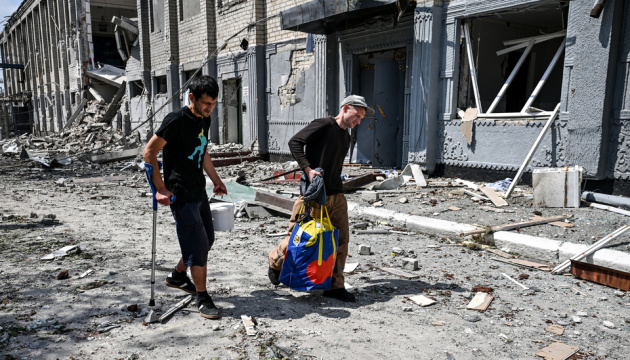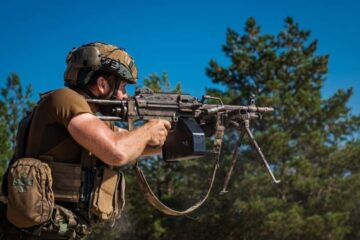A Russian strike on a correctional facility in southern Ukraine killed at least 16 people and injured 90+ more just before midnight on Monday, in what is believed to be the deadliest attack on a Ukrainian prison since Russia launched its full-scale invasion in February 2022. The Russian military, in its Telegram channels, admitted having committed the crime.
On the night of July 29, 2025, the Bilenke correctional facility near the city of Zaporizhzhia was hit by four FAB-500 bombs, each weighing approximately 1,100 pounds. First-time convicts are serving their sentences in that prison camp. The strike killed people who could not resist or defend themselves. In their Telegram channels, the Russian army admitted having delivered the strike, saying, yes, we did it, we struck, yes, we hit the prison.
Ukrinform correspondents visited the site of one of the most devastating attacks on a Ukrainian correctional facility ever.
[embedded content]
OVERNIGHT BOMBING ATTACK
The village of Bilenke that hosts the correctional facility has recently come under frequent enemy attacks with FPV drones, and the village is reachable also for MLRS rockets. In the early hours of July 29, the Russian military attacked the prison with several FAB-500 precision glide bombs.
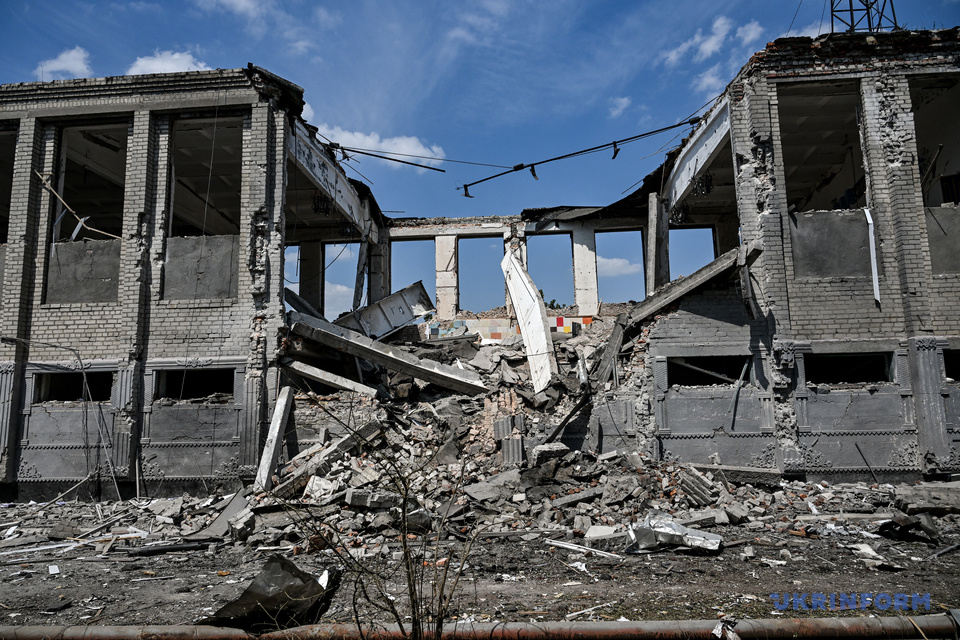
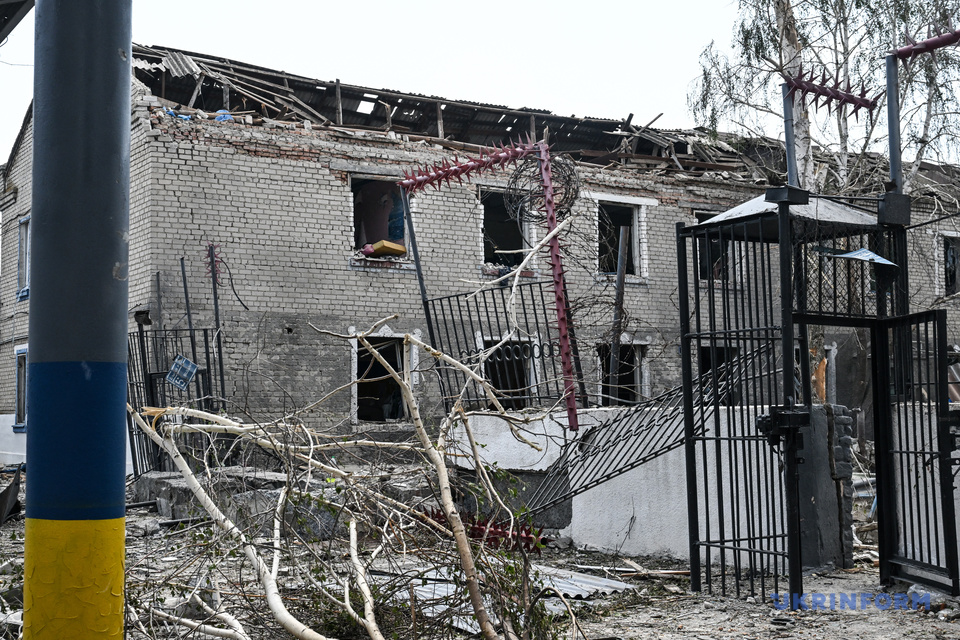
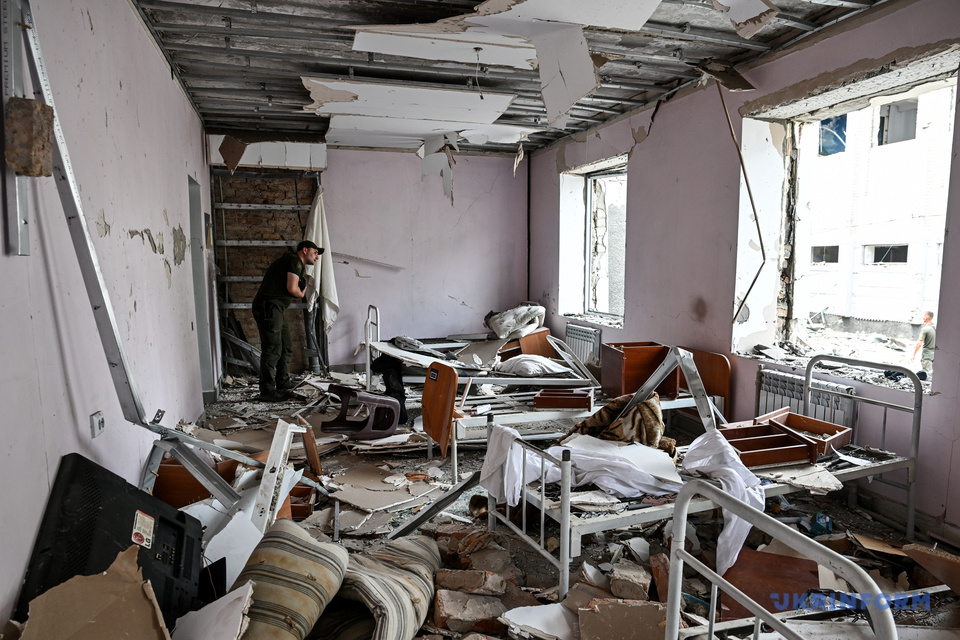
“At 11:39 p.m on July 28, the enemy launched a sneak attack on the territory of the correctional institution and on nearby residential buildings with three precision glide bombs, killing 16 inmates and inflicting wounds on over four dozen others. The latter sustained injuries of varying grades and were rushed to hospital,” Dmytro Azarov, the deputy head for specialized educational and psychological programs at the institution has said in a statement.
According to Mr. Azarov, ambulance crews arrived at the scene very quickly. All the injured were taken to hospitals, where they were provided with professional medical care. Employees at the prison camp assisted the doctors in providing on-spot medical attention to those affected who did not require hospitalization, numbering about five dozen.
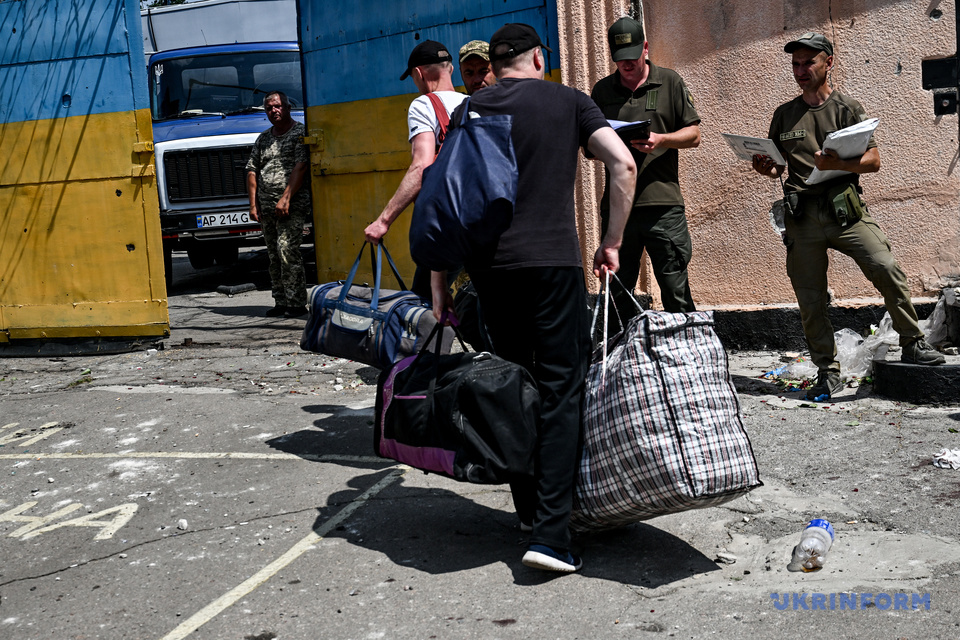
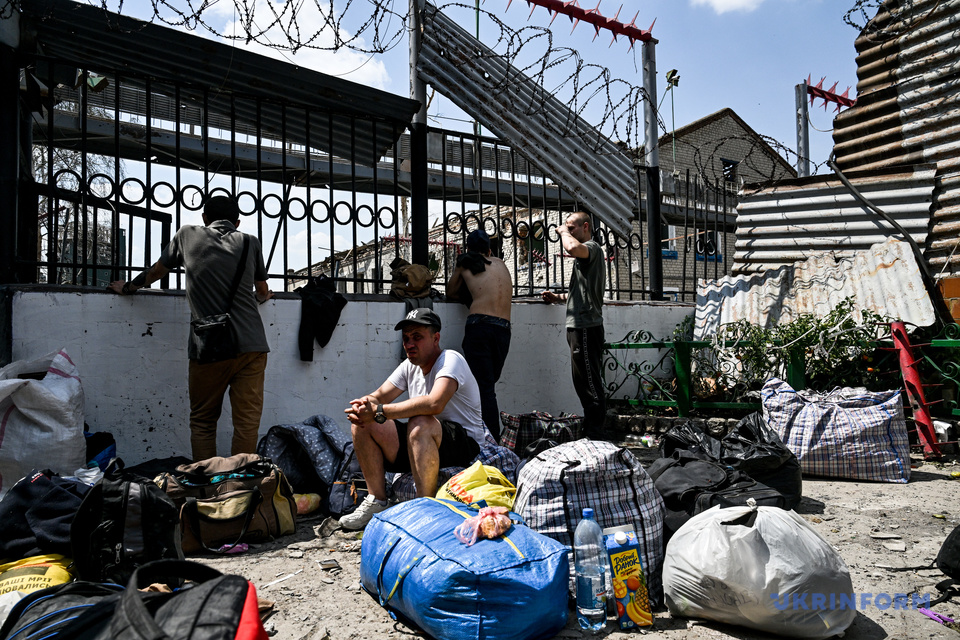
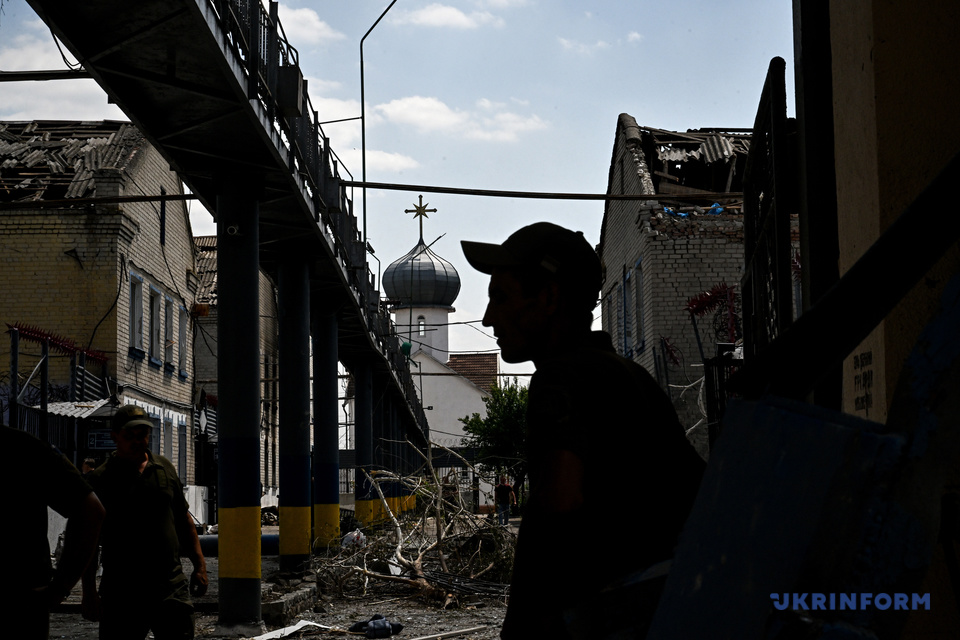
Dmytro Azarov says that the prison administration had consulted both the inmates and employees in advance about actions in emergency situations. A clear emergency action plan was communicated to everyone. That helped avoid panic among the prisoners, and everyone acted quickly and in a coordinated manner.
EVIDENCE FROM SURVIVORS
Two precision guided bombs hit the dining room. The bombs hit the central part of the two-story building. The concrete floors and brick walls collapsed and turned into a huge pile of construction debris. There was a shop on the first floor – it was badly damaged. Fortunately, there was no one in the building at the time of the night attack.
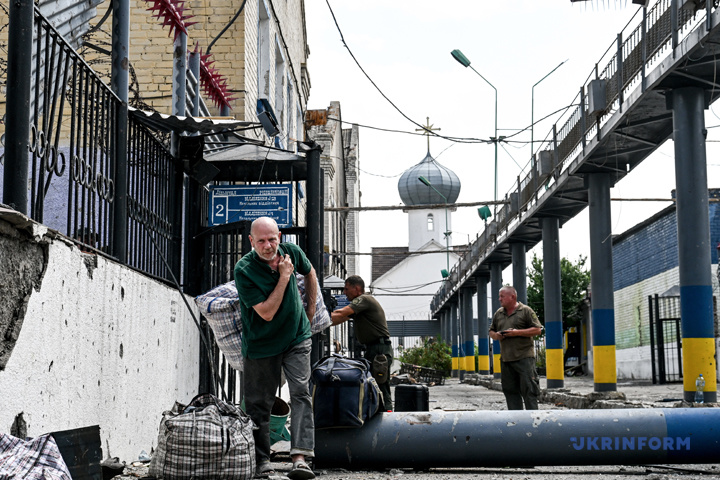
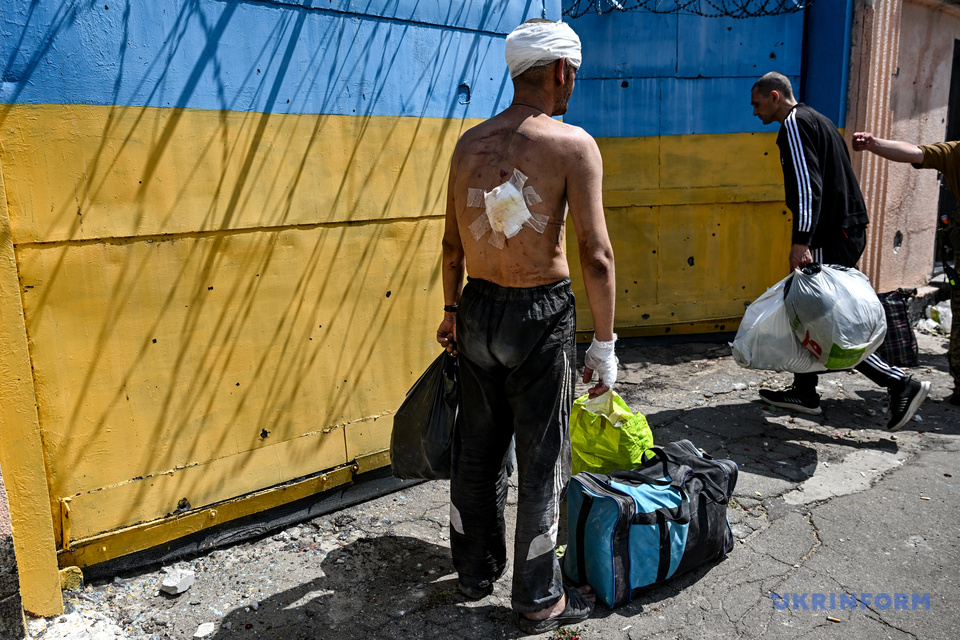
One more KAB-500 bomb directly hit the prisoners’ barracks.
As recalled by Anatoliy, a 38-year-old inmate who was in one of the barracks and sustained head and limb injuries, the explosion made him fall, then he found himself dumped under a pile of debris.
“I started to get out. I was just climbing into the light. The guys looked like they’ve been put through a meat grinder. It was scary, of course. There were seven or eight dead in my barrack. I suffered few injuries. You see, the arm, leg, and the head. They bandaged me and I had to help others,” the man says.
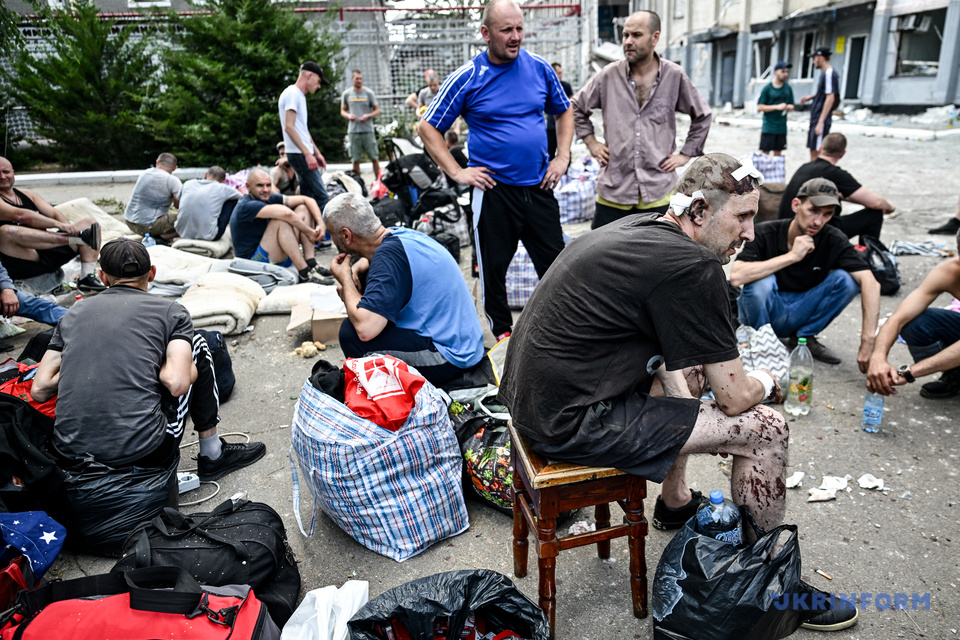
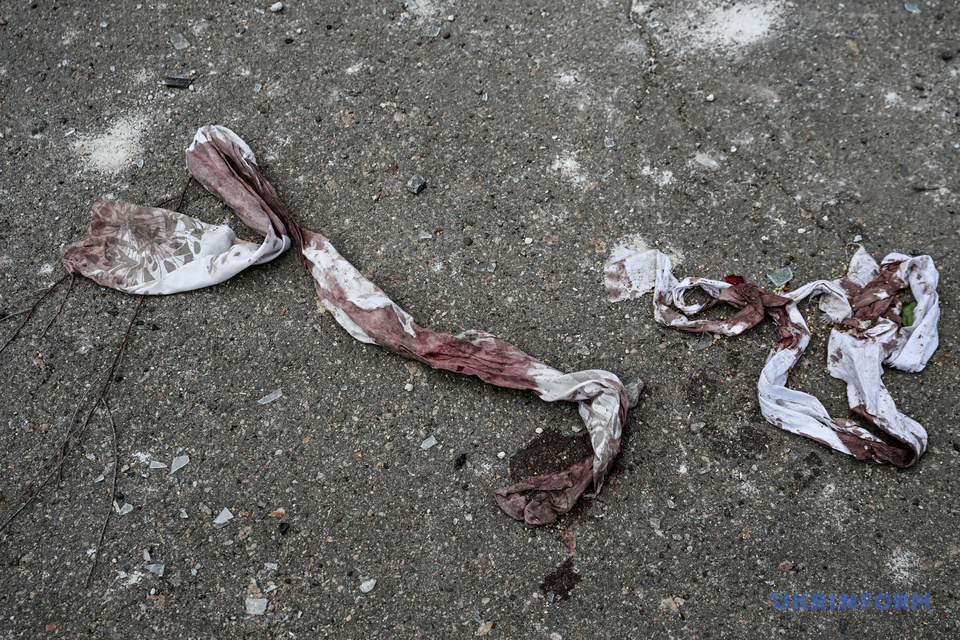
In the same barrack, but in its wing that was not badly damaged, there was a 22-year-old convict named Oleksandr. The man was lucky to survive. He recalls the KAB strikes with an accuracy of up to the minute.
“One KAB flew in, struck between two sectors. Lots of men died. Then a few minutes later – another KAB came in, then… at 23:40, yet another one, which fell into the water, and then the fourth followed. We were going around, rescuing, pulling people out,” Oleksandr recalls.
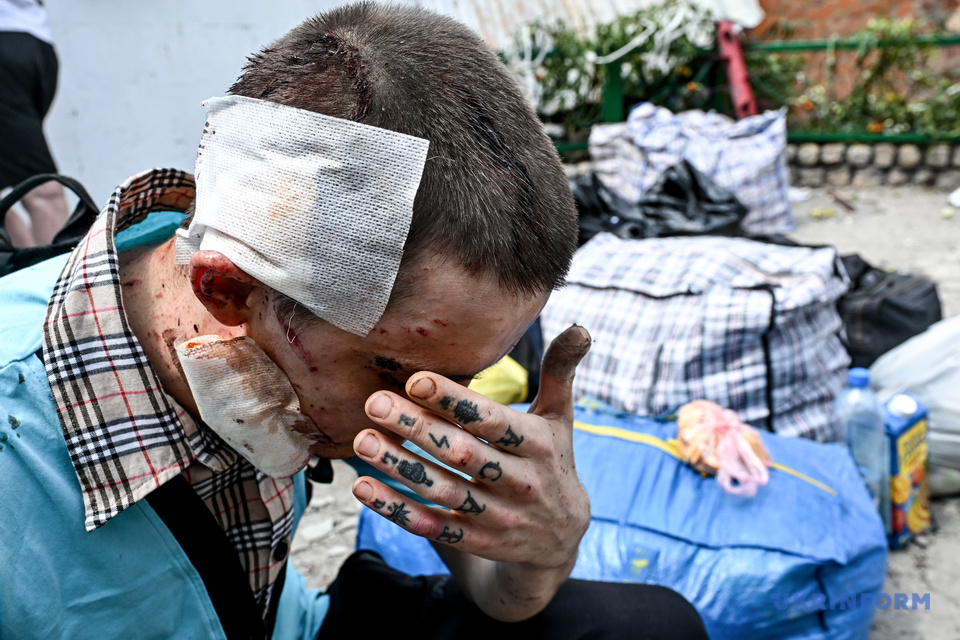
An explosion in one of the barracks, located not far from the destroyed one, caused a fire. Now the windows and walls there are black with soot. The prisoners are recovering from the terrible night, gathering their belongings and receiving help. They say that they heard explosions before, because strikes have been frequently reaching Bilenke. They say they knew that Russian bombs will eventually reach the prison, sooner or later.
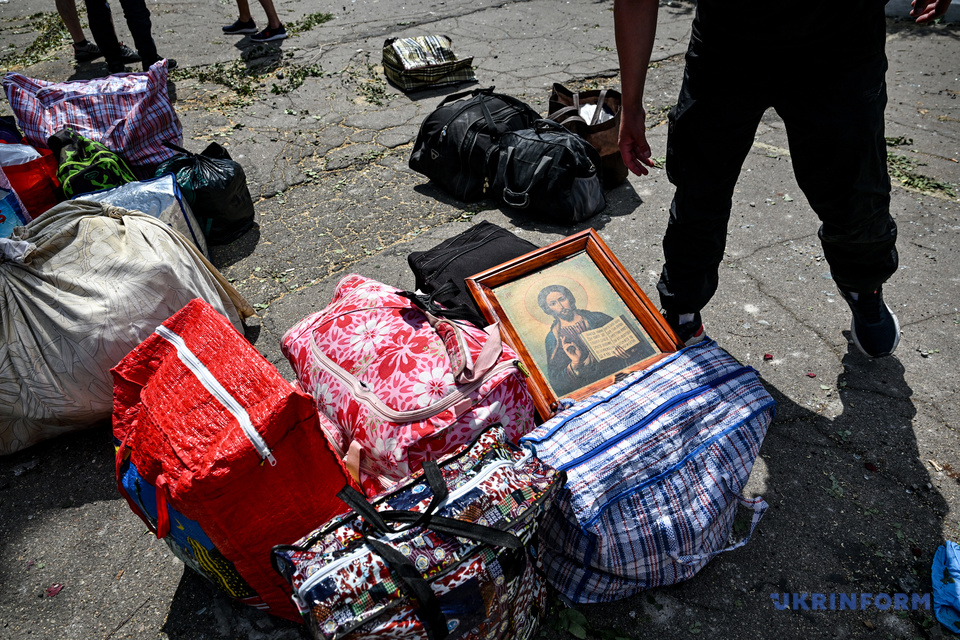
One of the men took icons and paintings out of the damaged barracks. He declined to provide details about the attack, beyond saying that he himself was in the part of the building that was left undamaged.
Employees at the prison are saying that the biggest threat to the village of Bilenke is now coming from Russian drone attacks. For that reason, literally every wall of the correctional facility features an inscription reading, “Caution. Beware of FPV drones, they are dangerous,” which seems to underscore the level of the threat.
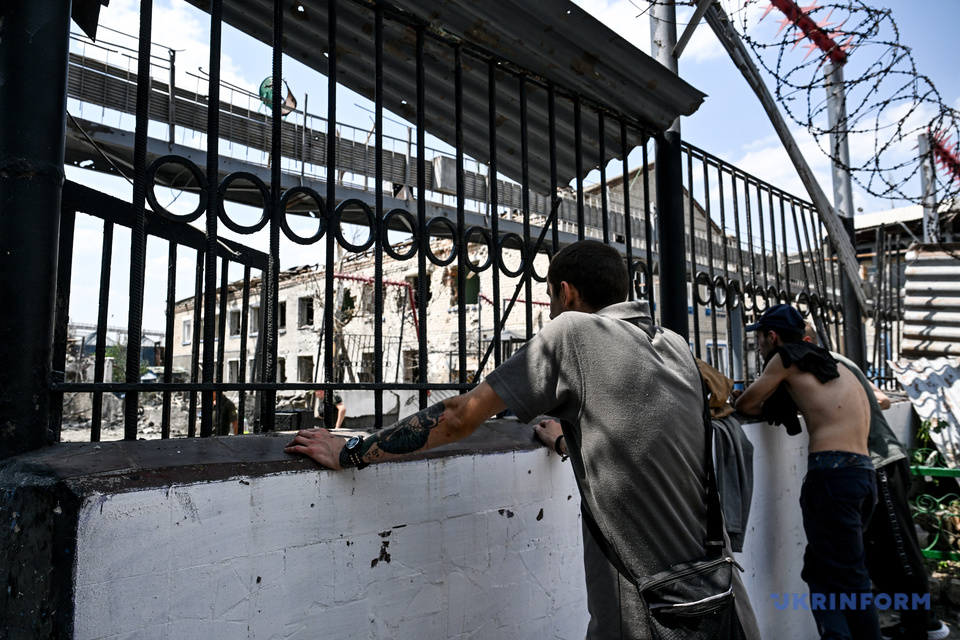
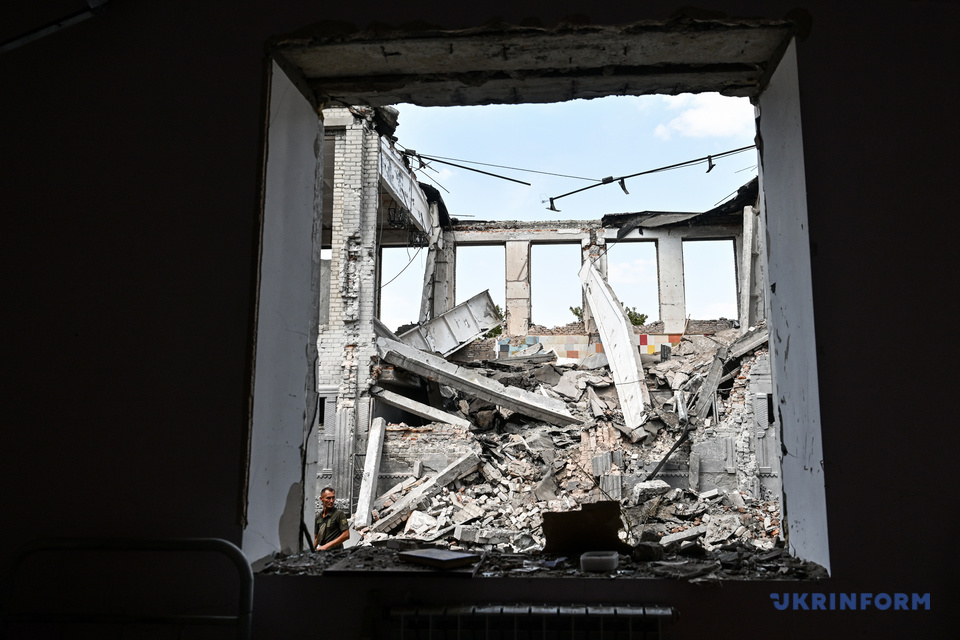
Bilenke is the only prison camp in the region that had not been evacuated after the start of the all-out war.
The Ministry of Justice emphasized that the prison perimeter fence was left intact after the strike.
* On 29 July 2022, Russian Armed Forces shelled a building housing Ukrainian prisoners of war in a Russian-operated prison in Molodizhne near Olenivka, Donetsk Oblast as a false flag operation during the Russian invasion of Ukraine, killing 53 to 62 Ukrainian prisoners of war (POWs) and leaving 75 to 130 wounded. The prisoners were mainly soldiers belonging to the Azov regiment who defended the Azovstal steel works, the last Ukrainian stronghold in the siege of Mariupol.
Olha Zvonareva
Photo: Dmytro Smolienko
Source: Russia Marked 3rd Anniversary of Olenivka Massacre* by Bombarding Prison in Southern Ukraine

